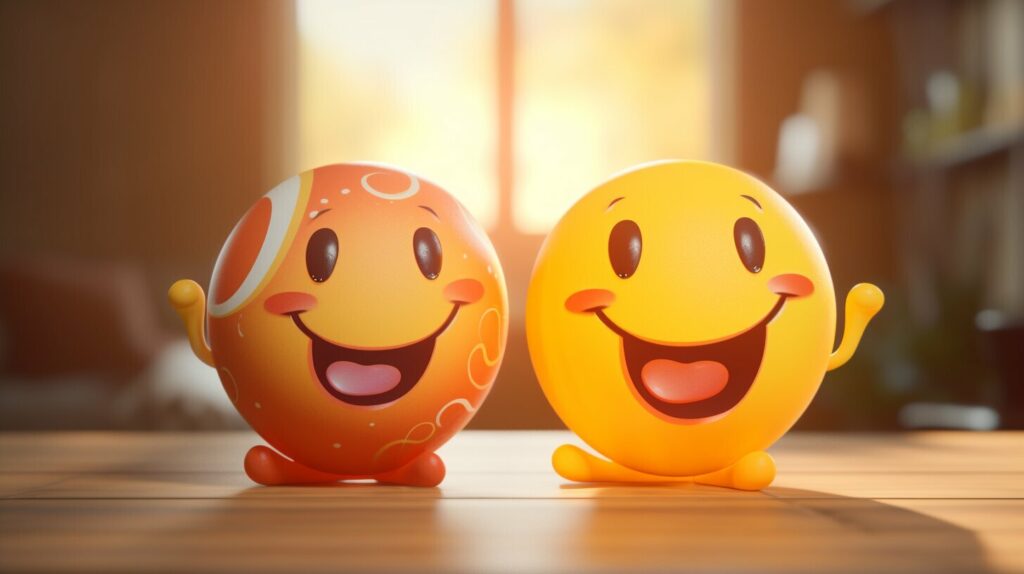Thermodynamics can be a complex subject to understand, even for adults. However, explaining it to a child can be even more challenging. Luckily, with a little creativity and the right approach, you can help your child understand thermodynamics in a simple and fun way. In this article, we will break down the basics of thermodynamics and provide you with tips and resources to teach your child about this fascinating field of science.
Key Takeaways:
- Explaining thermodynamics to a child can be difficult, but with the right approach, it can be fun and engaging.
- Using relatable examples, simple language, and interactive activities can help children understand the principles of thermodynamics.
- Resources such as books, websites, and experiments can further enhance a child’s understanding of thermodynamics.
What is Thermodynamics?
Have you ever wondered why things heat up or cool down? Why do ice cubes melt on a hot summer day? These are some questions that thermodynamics can help us answer. Thermodynamics is a branch of physics that deals with the relationships between heat, energy, and work.
Simply put, thermodynamics is the science of heat and energy transfer. It explains how heat moves from one place to another and how energy is transformed from one form to another. This science is vital for understanding the physical world around us.
Thermodynamics is used to explain a wide range of things, from how car engines work to how stars are formed. It is an essential part of our understanding of the natural world and helps scientists make predictions about how things will behave.

When teaching thermodynamics to kids, it’s essential to keep it simple and relatable. Use examples from their daily lives, like why a cup of hot cocoa cools down or how a refrigerator works, to help them understand the concepts. With a little creativity and patience, thermodynamics can be a fun and fascinating subject for children to learn!
The Three Laws of Thermodynamics
Now that you understand what thermodynamics is, let’s dive into the three laws of thermodynamics.
The first law of thermodynamics states that energy cannot be created or destroyed, only converted from one form to another. This means that the total amount of energy in a closed system remains constant.
The second law of thermodynamics states that entropy (a measure of disorder or randomness) always increases over time in a closed system. For example, when a hot object is placed in a cold environment, the heat energy will transfer from the hot object to the colder environment until both reach the same temperature.
The third law of thermodynamics states that it is impossible to reach absolute zero (the temperature at which all matter stops moving) through a finite number of steps. This is because as the temperature approaches absolute zero, the entropy of a system approaches a minimum value and becomes constant.
Understanding these laws may seem daunting at first, but breaking them down into relatable examples can make it easier for children to understand. For instance, the first law of thermodynamics can be demonstrated by placing a battery in a flashlight, which converts chemical energy into electrical energy and then into light energy. The second law of thermodynamics can be illustrated with a melting ice cube, as the ice melts and becomes more disordered. The third law of thermodynamics may be a bit more abstract for children, but it is still important to introduce them to this concept.

Energy and Heat Transfer
One of the key concepts in thermodynamics is the transfer of energy and heat. Energy is the ability to do work, like lifting a heavy object or powering a car. Heat is a form of energy that is transferred from one object to another due to a difference in temperature. When two objects with different temperatures come into contact, heat flows from the hotter object to the cooler one.
Think of how a cup of hot cocoa cools down when it’s left on the counter. The heat from the cocoa flows into the air around it, making the cocoa cooler. This transfer of heat is essential in thermodynamics because it helps us understand how energy moves between objects and how it can affect their properties.
You can see examples of heat transfer in everyday life, such as when you heat up food in the microwave or feel the warm sun on your skin on a sunny day. Understanding energy and heat transfer is crucial to grasping the principles of thermodynamics.

Image source: seowriting.ai
How Thermodynamics Affects Everyday Life
Thermodynamics is all around us, affecting our daily lives in ways we may not even realize. Whether you’re cooking a meal, powering up your phone, or enjoying the outdoors, the principles of thermodynamics are at work.
One example of thermodynamics in action is cooking. When you turn on the stove, the heat energy is transferred from the burner to the pot, and then to the food inside. This process is known as conduction, and it’s one of the ways that heat can be transferred. Another way is through convection, which occurs when heat is transferred through fluids, like liquids or gases. This is why you can see bubbles rising to the surface of a pot of boiling water.
Thermodynamics also plays a role in weather patterns. The sun’s energy heats up the Earth’s surface, causing air to rise and form clouds. When those clouds reach a certain point, they release their moisture in the form of rain or snow. This process is known as the water cycle, and it’s a key example of how energy is constantly being transformed from one form to another.
Finally, thermodynamics is essential to the functioning of electronic devices. The transfer of energy from a battery to a circuit is what powers your phone or computer. Without the principles of thermodynamics, we wouldn’t have the technology we rely on every day.

So, next time you’re cooking or using your phone, take a moment to appreciate the wonders of thermodynamics at work!
Fun Experiments to Explore Thermodynamics
If you want to make learning about thermodynamics even more fun, there are a few experiments you can do at home with your children. These experiments are safe, simple, and a great way to teach children about the principles of thermodynamics.
Experiment 1: Balloon Heat Transfer
For this experiment, you will need a balloon, a bottle, and hot water. First, fill the bottle with hot water. Then, stretch the balloon over the opening of the bottle and wait for a few minutes. What happens to the balloon? Why does it happen? This experiment teaches children about heat transfer and how heat energy can cause objects to expand.
Experiment 2: Ice Cube Melt Race
For this experiment, you will need two ice cubes, one wrapped in aluminum foil and one without. Place both ice cubes in a warm place and wait for them to melt. Which ice cube melts faster? Why? This experiment demonstrates how different materials can affect heat flow and transfer.
Experiment 3: Soda Can Heat Engine
For this experiment, you will need an empty soda can, a bowl of ice water, and a source of heat (such as a stove or a candle). First, place the soda can on the heat source and wait for it to heat up. Then, carefully transfer the can to the bowl of ice water. What happens to the can? Why does it happen? This experiment shows how heat can be turned into mechanical energy, and how differences in temperature can be used to create a heat engine.
By doing these experiments, you can help your children develop a deeper understanding of thermodynamics, and make learning about this complex subject more fun and engaging!
Famous Scientists and Their Contributions to Thermodynamics
Learning about famous scientists who have contributed to the field of thermodynamics can be both fascinating and inspiring for children. These scientists have made significant discoveries that have shaped our understanding of energy and its transformations. Here are a few notable scientists:
| Scientist | Contribution |
|---|---|
| James Joule | Discovered the relationship between heat and mechanical work |
| Sadi Carnot | Developed the Carnot cycle and the concept of heat engines |
| Ludwig Boltzmann | Formulated the statistical definition of entropy and contributed to the kinetic theory of gases |
| Nikola Tesla | Contributed to the development of alternating current (AC) power systems and the understanding of energy transfer |
| Albert Einstein | Developed the theory of relativity, which has implications for thermodynamics and the nature of energy |
These scientists, among others, have paved the way for our current understanding of energy and its transformations in the natural world. Learning about their contributions can help children appreciate the significance of thermodynamics and its impact on our lives.
“The more one studies thermodynamics, the more one regrets that he did not study it earlier,” said Albert Einstein. Encourage your child to explore the fascinating subject of thermodynamics and discover the wonders of energy and its transformations.
Common Misconceptions About Thermodynamics
Understanding thermodynamics can be challenging for anyone, especially for young minds. There are a few common misconceptions that can make it even more confusing. It’s important to clear these up to help children develop accurate and comprehensive knowledge of thermodynamics.
- Thermodynamics is only about heat and temperature. While thermodynamics does deal with heat and temperature, it also encompasses concepts like energy, work, and entropy. These ideas are all interconnected and essential to understanding thermodynamics fully.
- Thermodynamics only applies to large scale systems. Thermodynamics principles can be applied at any scale, from molecules and atoms to planets and stars.
- Thermodynamics is a static field of study. Thermodynamics is a dynamic field that continues to evolve as new discoveries are made. It’s an exciting area of science that is constantly expanding our understanding of the world around us.
By clearing up these misconceptions, you can help children develop a more accurate and comprehensive understanding of thermodynamics, making it easier for them to grasp the concepts in this complex field of study.
Books and Resources for Further Learning
If you want to learn more about thermodynamics, there are plenty of resources available to help you dive deeper into this fascinating subject. Here are some books and websites that we recommend:
Books
- Thermal Physics: Thermodynamics and Statistical Mechanics for Scientists and Engineers by Robert Floyd Sekerka
- Thermodynamics: An Engineering Approach by Yunus A. Cengel and Michael A. Boles
- Thermodynamics For Dummies by Mike Pauken
These books provide in-depth explanations of thermodynamics concepts and are suitable for older children and teenagers.
Websites
If you’re looking for online resources, check out the following websites:
| Website | Description |
|---|---|
| Kids Discover | This website offers a range of articles and resources on thermodynamics for kids, including interactive quizzes and activities. |
| National Geographic | This article provides a basic introduction to thermodynamics, with clear explanations and engaging visuals. |
| Bright Hub Engineering | This article offers tips and tricks for teaching thermodynamics to children, including fun experiments and activities. |
YouTube Videos
If you’re a visual learner, there are plenty of YouTube videos that can help you understand thermodynamics. Check out these channels:
Wrap Up
With these books, websites, and videos, you’ll be well-equipped to learn more about thermodynamics. Whether you’re a curious child or a science enthusiast, it’s never too early or too late to start exploring the fascinating world of thermodynamics!
Conclusion
Congratulations! You now have a basic understanding of thermodynamics! By breaking down complex concepts into simple and relatable examples, you can teach young minds about this fascinating field of science.
Remember to reinforce the importance of understanding thermodynamics in everyday life. Cooking, electronic devices, and weather patterns are just a few examples of how thermodynamics affects us all.
If you want to take your learning to the next level, try out some of the fun experiments provided in this article. And don’t forget to explore the recommended books and resources for even more information about thermodynamics.
By building a strong foundation in thermodynamics, you can inspire the next generation of science enthusiasts and problem-solvers. Keep exploring and have fun!
Can the Techniques used to Explain Thermodynamics to a Child be Applied to Explaining Engineering as well?
Explaining engineering to a child requires similar techniques as explaining thermodynamics to them. It entails breaking down complex concepts into simple, relatable terms that they can grasp easily. By using everyday examples, interactive visuals, and storytelling, we can make engineering concepts more accessible and engaging for young minds. Adopting these strategies helps bridge the gap between adult knowledge and a child’s understanding, enabling effective communication of even the most intricate engineering principles.
FAQ
Q: How can I explain thermodynamics to a child?
A: When explaining thermodynamics to a child, it’s important to use simple and fun tips. Start by introducing the concept of thermodynamics using relatable examples. Use clear language and analogies that children can easily understand and engage their curiosity.
Q: What is thermodynamics?
A: Thermodynamics is the study of how heat and energy work together. It helps us understand how things like cooking, weather patterns, and electronic devices function. By learning about thermodynamics, children can gain a better understanding of the world around them.
Q: What are the three laws of thermodynamics?
A: The three laws of thermodynamics are fundamental principles that explain how heat and energy behave. The first law states that energy cannot be created or destroyed, only transferred or transformed. The second law states that heat cannot spontaneously flow from a colder object to a hotter object. The third law states that as the temperature approaches absolute zero, the entropy of a system approaches a minimum value.
Q: How does thermodynamics affect everyday life?
A: Thermodynamics has a significant impact on our daily lives. It explains how heat is transferred during cooking, how weather patterns form, and how electronic devices function. By understanding thermodynamics, children can appreciate the role it plays in their everyday experiences.
Q: Are there any fun experiments to explore thermodynamics?
A: Yes! There are many simple and safe experiments that children can do to explore thermodynamics. Some examples include creating a homemade solar oven, observing the effects of insulation, or conducting a heat conduction experiment. These experiments are interactive and educational, making learning about thermodynamics fun!
Q: Who are some famous scientists and their contributions to thermodynamics?
A: Several famous scientists have made significant contributions to the field of thermodynamics. Some notable names include James Joule, who discovered the relationship between mechanical work and heat, and Sadi Carnot, who developed the concept of the Carnot cycle. Learning about these scientists and their discoveries can inspire children to pursue their own scientific interests.
Q: What are some common misconceptions about thermodynamics?
A: There are a few common misconceptions about thermodynamics. One misconception is that heat and temperature are the same, when in fact, heat is the transfer of thermal energy. Another misconception is that thermodynamics only applies to big machines, when it actually has applications in everyday life. By addressing these misconceptions, children can develop a clearer understanding of thermodynamics.
Q: Are there any books or resources for further learning about thermodynamics?
A: Yes! There are many books, websites, and other resources available for children to explore thermodynamics further. Some recommended options include “The Magic School Bus and the Electric Field Trip” by Joanna Cole and “Thermodynamics For Dummies” by Mike Pauken. These resources make learning about thermodynamics engaging and enjoyable.






